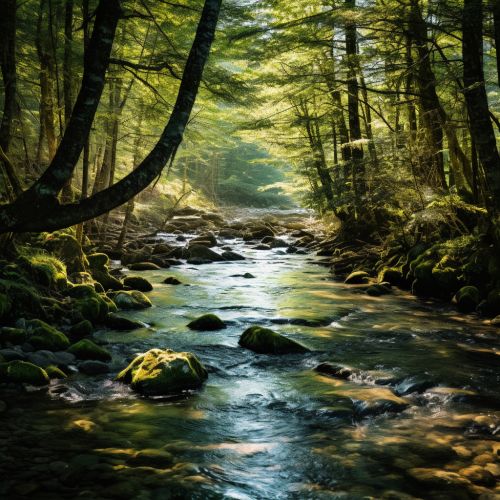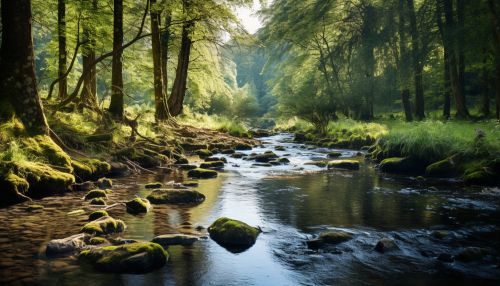Groundwater
Introduction
Groundwater is the water found underground in the cracks and spaces in soil, sand, and rock. It is stored in and moves slowly through geologic formations of soil, sand, and rocks called aquifers. Groundwater is one of the largest sources of fresh water on Earth, and plays a vital role in the ecosystem, supporting plant growth and serving as a critical resource for human consumption and agriculture.
Formation and Distribution
Groundwater originates from rain and snow that seeps into the ground, a process known as infiltration. The water then travels through the pore spaces and fractures in soils and rocks. The speed at which groundwater flows depends on the size of the spaces in the soil or rock and how well the spaces are connected.
The upper surface of the groundwater is called the water table. Below this surface, all the spaces and fractures in the soil and rocks are filled with water. The water table may be located a few inches to several feet below the ground surface in some places, while in other areas it is hundreds of feet deep.
Groundwater is distributed unevenly across the Earth, depending on factors such as climate, topography, geology, and human activity. It is most abundant in regions with high rainfall and permeable soil or rock, and less common in arid regions or areas with impermeable rock.
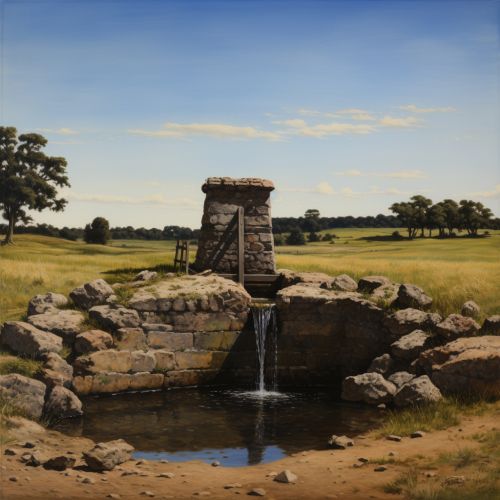
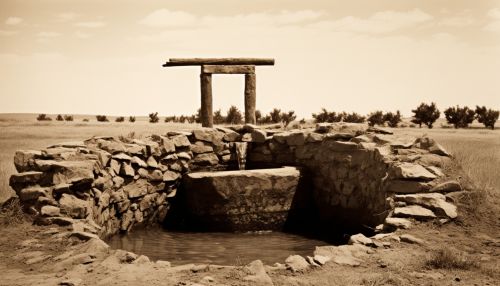
Characteristics
Groundwater is generally cleaner than surface water due to natural filtration processes as water percolates through soil and rock. However, it can still be contaminated by human activities, such as improper disposal of waste, overuse of fertilizers and pesticides, or leakage from septic tanks.
The temperature of groundwater is relatively stable throughout the year, making it a valuable resource for geothermal heating and cooling. The chemical composition of groundwater can vary widely, depending on the types of rocks and minerals it comes into contact with.
Extraction and Use
Groundwater is extracted primarily through wells drilled into aquifers. A water well is a structure created in the ground by digging, driving, or drilling to access groundwater in underground aquifers. The well water is drawn by a pump, or using containers, such as buckets, that are raised mechanically or by hand.
Groundwater is a crucial resource for human use. It provides drinking water for millions of people and is a major source of water for irrigation. In many rural and arid regions, groundwater is the only reliable source of fresh water. It is also used in industrial processes, and for heating and cooling in geothermal systems.
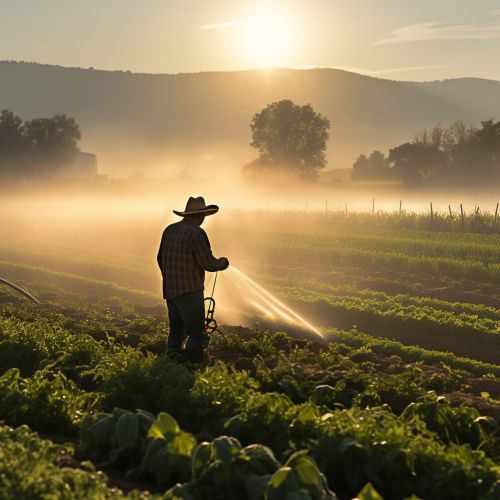
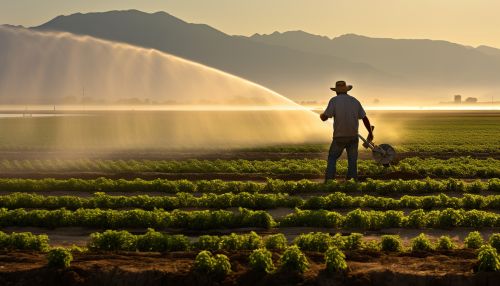
Groundwater Management
Groundwater management involves the sustainable use of this resource to meet current and future human needs while maintaining environmental health. This includes monitoring groundwater levels and quality, regulating extraction, and implementing measures to protect groundwater from pollution.
Over-extraction of groundwater, often for agricultural irrigation, can lead to groundwater depletion, a serious problem in many parts of the world. This can cause land subsidence, reduced water quality, and conflicts over water rights.
Groundwater recharge, the process by which water moves from surface water to groundwater, is an important aspect of groundwater management. This can occur naturally, or be enhanced by human activities, such as the construction of recharge basins or the use of reclaimed water for irrigation.
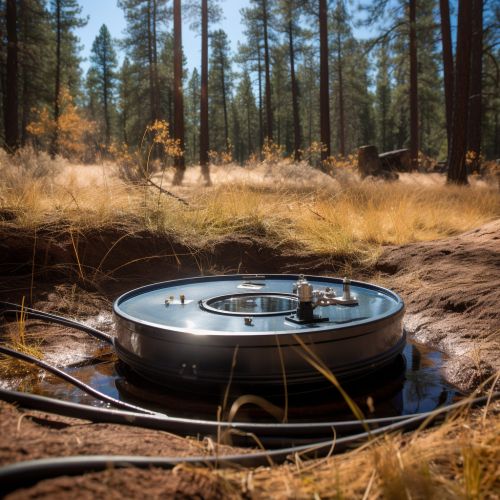
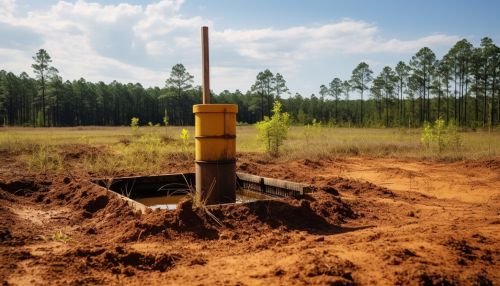
Environmental Impact
Groundwater plays a crucial role in maintaining the health of ecosystems. It contributes to the flow of rivers and streams, and supports wetlands and other aquatic ecosystems. Many species of plants and animals depend on groundwater, either directly or indirectly.
However, human activities can have a significant impact on groundwater and the ecosystems it supports. Over-extraction can lower the water table, reducing the amount of groundwater available to support plant and animal life. Pollution from agricultural runoff, industrial waste, or leaking septic systems can contaminate groundwater, harming both human health and ecosystems.
